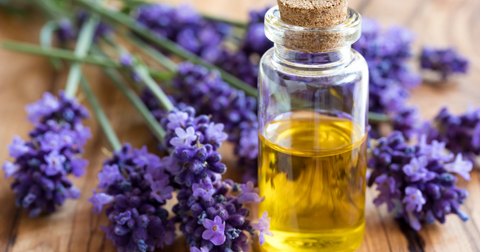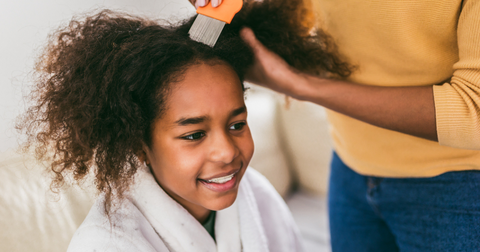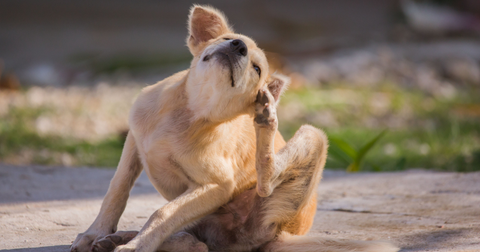As more families lean towards greener, more holistic approaches to health and wellness, using essential oils as a natural lice treatment option has garnered attention.
Lavender oil, in particular, has been anecdotally praised for its lice-repelling qualities, and recent studies are beginning to support these claims.
What is lavender oil?
Lavender oil is a natural essential oil obtained from the lavender plant, a fragrant herb known for its beautiful purple flowers.
The oil is typically extracted through steam distillation. This process involves passing steam through lavender flowers to vaporize the volatile compounds, which are then condensed back into liquid form. This method ensures that the essence of the plant is captured in its purest form.
The magic of lavender oil lies in its composition. It's rich in compounds like linalool and linalyl acetate. These are largely responsible for its delightful scent and many of its therapeutic properties. These natural chemicals are what give lavender oil its calming and soothing qualities.
Historically, lavender has been used for centuries in various cultures for its medicinal properties. It's been a staple in the world of aromatherapy and natural healing, treasured for its ability to relax the mind, alleviate stress, and aid in sleep.
In modern times, its use has expanded into skincare, household products, and as we're discussing here, as a natural remedy to get rid of lice.
Does lavender oil prevent lice?
Did you know that the same lovely scent of lavender that calms your nerves might actually turn lice off?
A study conducted in 2007 delved into this aspect by comparing various botanical and synthetic substances used to prevent head lice infestations. The findings were promising – lavender oil demonstrated a significant ability to prevent lice from feeding on blood, which is crucial for their survival and reproduction. While tea tree and peppermint oils showed higher levels of repellence, lavender still stood out as a notable natural deterrent.
Incorporating lavender oil into your daily hair care routine could be a practical and natural way to keep lice at bay. Whether it's adding a few drops to your shampoo or creating a homemade hair spray, consistent use could serve as an effective preventive measure.
Does lavender oil kill lice?
While lavender oil’s prowess in preventing lice is impressive, its ability to combat these pests doesn’t stop there. Interestingly, it also shows potential in killing lice, particularly before they hatch.
A 2011 study on the efficacy of oils used to kill head lice tested the effects of three lice-killing treatments: melaleuca oil and lavender oil, eucalyptus oil and lemon tree oil, and a “suffocation” chemical treatment.
Although more studies are recommended, the study found that the “suffocation” treatment and the melaleuca oil and lavender oil treatment displayed the highest efficacy in killing lice eggs. Lavender oil and melaleuca oil had a 44.4% ovicidal efficacy, with the suffocation pediculicide coming in at number one with a 68.3% efficacy.
How to Use Lavender Oil for Lice

If you're considering using lavender oil as part of your head lice treatment regimen, it's essential to understand how to use it safely and effectively. Here is a step-by-step guide on applying lavender oil to tackle head lice:
Step 1: Choosing the Right Lavender Oil
Opt for high-quality, pure lavender essential oil. Verify that the oil has not been diluted with carrier oils if aiming for a blend.
Step 2: Patch Testing
Before full application, conduct a patch test to ensure there are no allergic reactions. Apply a small amount of diluted lavender oil to the skin on the inside of the forearm. Wait for 24 hours to observe any adverse reactions.
Step 3: Preparing the Oil Mixture
Always dilute lavender oil with a carrier oil, such as coconut oil or olive oil, to prevent skin irritation. A general guideline is to add 1-2 drops of lavender oil per teaspoon of carrier oil.
For a stronger treatment, consider blending lavender oil with other essential oils known for their lice-repelling properties, like tea tree oil, following similar dilution ratios.
Step 4: Application
Apply the oil mixture directly to the scalp, starting at the nape of the neck and behind the ears, areas where lice are commonly found. Use your fingers or a cotton ball to apply the oil, ensuring that you cover the entire scalp. Massage gently, ensuring that the oil doesn't drip into the eyes, which can be irritating.
Step 5: Combing
After applying the oil, use a fine-toothed nit comb to comb through the hair, section by section, to remove lice and nits. Wipe the comb on a paper towel after each pass to remove any lice or eggs.
Step 6: Covering the Hair
Once the oil is applied, and the hair has been thoroughly combed, cover the head with a shower cap. Leave the oil on for at least an hour or, for more effectiveness, overnight.
Step 7: Washing Out
Use a regular shampoo to wash the hair thoroughly after the treatment. It may take a couple of washes to remove all the oil. Rinse the hair with a mixture of water and vinegar to help dissolve the glue that holds the nits to the hair shafts, making them easier to remove with a comb.
Step 8: Repeating the Treatment
Because nits can hatch within a week, repeat the treatment every few days for at least two weeks to catch any newly hatched lice.
Step 9: Cleaning to Prevent Reinfestation
Alongside treatment, launder all bedding, hats, and clothing that have been in contact with the infested person in hot water and dry on high heat. Vacuum carpets and furniture to remove any hairs that may have viable nits attached.
Safety Considerations
- Avoid using essential oils, including lavender, undiluted on the skin.
- Never apply essential oils internally or in the eyes or mouth.
- Pregnant women, nursing mothers, and parents treating young children should consult with a healthcare provider before using essential oils.
Embracing Nature’s Remedy

Lavender oil’s proven efficacy in repelling and killing lice, backed by scientific research, positions it as a versatile and effective treatment. By integrating lavender oil into regular hair care routines, either as a preventive measure or as part of a treatment plan, we can tackle head lice infestations with a method that is not only effective but also gentle and aromatic.
Interested in natural, effective solutions for lice treatment?
Check out Hair Fairies' range of specialized products and expert hair services. From preventive hair care to professional lice removal treatments, Hair Fairies has everything you need for a holistic approach to maintaining healthy, lice-free hair.
Visit Hair Fairies today and experience the peace of mind that comes with expert care!



Comments (0)
There are no comments for this article. Be the first one to leave a message!